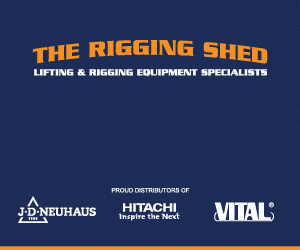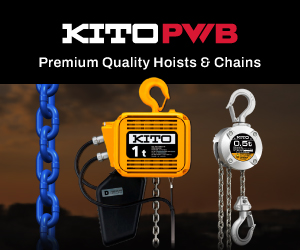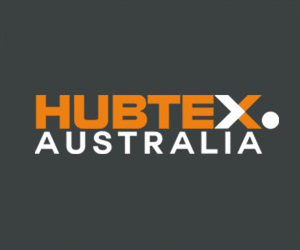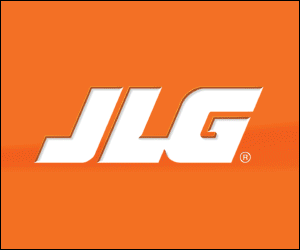)
Size Matters
The UK pioneered the use of lightweight low-level access platforms and they have started to spread far beyond Europe. Is there a growing market for these products in Australasia, or is the 19-foot scissor still king? Dan Jenkins finds out.
While the 19ft scissor lift remains the backbone of any rental fleet, smaller self-propelled scissors for more specialist applications are starting to gain traction.
Mike Flanagan, Product Manager at Genie, said: “Over the last few years, new products such as the Genie GS-1330m micro scissor lift have been introduced that can deliver productive power in a lightweight, compact footprint. As a result, applications that historically could be tackled only by manually propelled MEWPs are now open to new ranges of machines that can meet requirements for low floor loading while also boosting productivity with drive-at-height capability.”
Fitted with Genie’s all-electric DC drive system, two people can work indoors from the 227kg capacity platform to a working height of 18ft 8in (5.9 m). The lift is 30.5in wide by 4ft 8in long (0.78m x 1.41m) and can travel in a standard service elevator thanks to its weight of 1,950lb (885kg).
“The GS-1330m is designed with sustainability, productivity, and low cost of ownership in mind, and is ideal for providing compact manoeuvrability in low-level access and space- and weight-restricted jobsites where emission-free and clean operation is important,” added Flanagan.
JLG recently launched the ES1330SL, a lightweight 13ft self-propelled scissor lift that has a zero inside turning radius thanks to AC drive motors fitted on the steer wheels. The JLG unit also offers an outdoor rating at full height. And Haulotte could soon follow suit.
Keith Clarke, General Manager of Haulotte Australia, said: “There is an emerging trend for smaller, compact scissors but it’s at a very early stage,” he said. “We will probably launch something similar to the 13ft scissors next year. Some of the rental companies are starting to sniff around those products but it is not a big market here yet. Currently the 19ft scissor is outselling smaller models by more than five to one.
“One of the reasons they haven’t taken off yet is price. If you look at the purchase price of a 19ft scissor versus a 13ft machine, there really isn’t that much of a gap between them. Two thousand dollars difference isn’t enough to make people invest in what is a purely indoor machine.”
However, Clarke believes that this trend is changing due to Australia’s two urban powerhouses, Melbourne and Sydney, which between them are home to almost half of the nation’s population. “Melbourne and Sydney are densely populated, high-rise buildings and that environment is where the lighter weight machines start to become more interesting,” he said. “You are looking at 1500 to 1600kg weight for a 19ft scissor, compared to 900-ish kilos for a 13ft machine. So, for floor loadings in those high-rise buildings, it becomes more attractive.”
A culture of continuous improvement and a desire to make incremental savings are also important drivers. “Australians are very good at embracing change,” added Clarke. “The cost of labour is so high that people are constantly looking for those one per cent gains in productivity. For example, every single compact machine we sell always has all the options ticked, such as swing gates and non-marking tyres. Very often there are now power outlets at the job site, so onboard generators are a must if you want to run power tools. They are also much less hassle than trying to run a cable.”
Market leading
The 19ft Optimum 8 scissor lift still makes up close to 70 per cent of Haulotte’s total sales in Australia. “The 19ft scissor market is incredibly strong,” added Clarke. “The overall MEWP market has contracted this year by about 20 per cent, but year to date sales of 19ft scissors are actually up by 2 per cent.
“Rental fleets are always 60 per cent or more made up of 19ft scissors. The purchase price versus rental rates is still pretty good for the rental company, while the rental rate is at the right price for the end user.”
In Australia there are currently around 10,000 Optimum 8s in operation, with over 1,300 of these having been purchased by Haulotte’s long time distribution partner, United Equipment. “United have been a key supporter of Haulotte for over 10 years now and it is through their support that we have significantly grown our market share, particularly round the Optimum 8.”
Haulotte recently shipped a range of electric scissors to Coates Hire, Australia’s largest general rental company, including some compact scissor lifts. Coates now has more than 1,000 Haulotte machines in its fleet and will have invested $7 million in Haulotte products by the end of this year.
“We have worked incredibly hard to get Coates onboard and they really recognise the benefits of both our products and service now,” said Clarke. “Coates Hire is right at the forefront when it comes to wanting to be an innovator, so they also appreciate our approach to innovation. Every time we have shown them something new, they have grasped the opportunity with both hands.”
The majority of the Coates Hire order was comprised of Haulotte’s Optimum 8 AC electric scissor with brushless motors. It has a 6m (19ft) maximum platform height and 230kg safe working load, and what Haulotte says is best-in-class turning radius. It was also the first Haulotte machine to include Activ’Screen onboard diagnostics.
“The predominant part of that order was for smaller lifts,” said Clarke. “Our industry is driven by smaller lifts. Australia is one of the most mature markets in the world and construction is still strong, which means the rental sector is strong. The versatility of the 19ft scissor is what makes it so popular. It can work outside a building, then go up in a goods lift to do interior work.”
Skyjack introduced new 15ft (4.44m) and 19ft (5.64m) scissors to the Asia-Pacific region as part of the global launch of its Next Generation range of DC electric scissor lifts earlier this year. Along with the SJ3215 and SJ3219, the company also updated its two compact mast lifts, the SJ12 and SJ16, which offer 12ft (3.65m) and 16ft (4.75m) maximum platform heights. Skyjack’s primary markets in the Oceanic region for all four machines are Australia and New Zealand.
Malcolm Early, Vice President Marketing for Skyjack, said: “In the years prior to Covid we were seeing around 20 per cent annual growth in the 19-foot and under category, so some good years of growth in the compact sector. Generally speaking, you can split that into two areas.
“The 19-foot class represents the vast majority of sales and enjoyed double digit growth. If you look at 14-foot and below, demand is still relatively small but is certainly growing. The rate of growth is definitely gaining momentum in that sector. We are seeing that trend globally, particularly in North America as well. On the vertical masts we are also seeing year-on-year growth.
The Next Generation scissor lifts and vertical masts include Skyjack’s Skycoded control system. The wiring is colour coded for ease of maintenance and repair, while the control system also now communicates more data to the company’s Elevate telematics system. There are also new safety features such as a single switch electronic emergency lowering and Skyjack’s optional Secondary Guarding and Lift Enable (SGLE) system.
SGLE uses a combination of features to protect the operator from the risk of crushing by an overhead obstacle. These include a shroud protecting the control box, and a secondary enable button, meaning both joystick and secondary must be pressed for the lift to operate – release of either stops all movement immediately.
Push-arounds
Growing demand for smaller and more lightweight products is starting to drive sales of push-around scissors. JLG has an established range of after adding the EcoLift products to its range with its acquisition of UK manufacturer Power Tower. “Overall, the multi-purpose versatility, application and reduced weight are all key drivers in the low-level access category,” said a JLG spokesperson. “As we see more and more projects becoming restricted for space and floor loading challenges these models will continue to grow in popularity.”
Snorkel offers three push-around scissors lifts, the S3006P, S3008P and S3010P. Matthew Elvin, CEO of Snorkel, said: “Our push-around mini scissor lifts have gained traction in many markets, including Australia and New Zealand, Europe, Scandinavia and we are seeing increasing adoption in the United States as well.”
The company is adding to this range with an outdoor-rated push-around, the S3210P. Sharing the same features as the existing indoor-rated models, the S3210P reaches a maximum working height of 5m, with a platform capacity of 240kg both indoors and outdoors. Weighing 470kg, the S3210P measures 0.81m wide and comes equipped with an auto-brake system and non-marking casters as standard. Saloon-style entry gates and an integrated step makes accessing the platform easy, even when carrying tools. It also has built-in forklift pockets for easy loading and movement around the jobsite.
“Initially designed for indoor-only use, we focused our recent product development efforts in this segment towards creating the outdoor-rated S3210P, in response to customer demand,” added Elvin. “This model can be safely used for exterior construction and facilities maintenance applications, as well as being used in indoor locations where there may be a wind-loading.”
Growth opportunity
He believes that some of the growth in demand is being driven by foreign contractors. “The increasing number of international contractors working in the region is driving an uptick in demand in specific area, around specific projects,” he said. “For example, in the past few years, we saw a spike in demand for low-level equipment from European contractors working in New Zealand during the rebuild of Christchurch.
“Low level access remains a developing market, and with increasing ‘ladders last’ campaigns worldwide, it is an area where we see continued market growth opportunities in the years to come.”
Skyjack also recognises this trend. “There is a growing awareness that a lot of jobs can be done in by low level machines for applications such as maintenance,” said Early. “The low weight and floor loading are appreciated, particularly on finished or decorative floors. This trend is also being driven by legislation moving contractors away from ladders and scaffold for low-level work at height.”
While rental companies account for the vast majority of sales, Early also believes there is potential for direct sales that rental companies can exploit “This sector more than any other has the potential for using distribution channels such as rental companies into end users,” he said. “For example, shopping malls and airports will buy rather than rent and keep these products on standby. In those sort of maintenance applications there is more of an incentive to buy.”
Atrium lifts
Even though operators now have additional choices, demand for manually propelled products like the Genie AWP series is still strong due to the ability to reach up to 40ft platform heights in very compact and lightweight machines.
Genie’s Flanagan added: “A growing need for lightweight, productive machines continues to drive innovation in both manually and self-propelled MEWPs that can get into restricted access applications with low floor loading requirements. As facility owners and jobsites continue to emphasize fall prevention, MEWPs are becoming increasingly more prevalent when work is required at height. This includes manually propelled MEWPs, which are well accepted, especially in areas a scissor lift can’t reach.”
The Genie AWP-30S Super remains one of its most popular manually propelled MEWPs. With a 30ft platform height, the Genie AWP-30 is lightweight enough for one person to load and unload from the back of a pick-up truck. “Although all MEWPs require maintenance, most manually propelled products are easy to maintain with simple control systems and no drive or steer systems to maintain,” added Flanagan.
“The MEWP industry as it is today really got its start with “push arounds,” and these products continue to play an important role where applications require compact, easy-to-use and easy-to-transport products with a low cost of ownership.”









